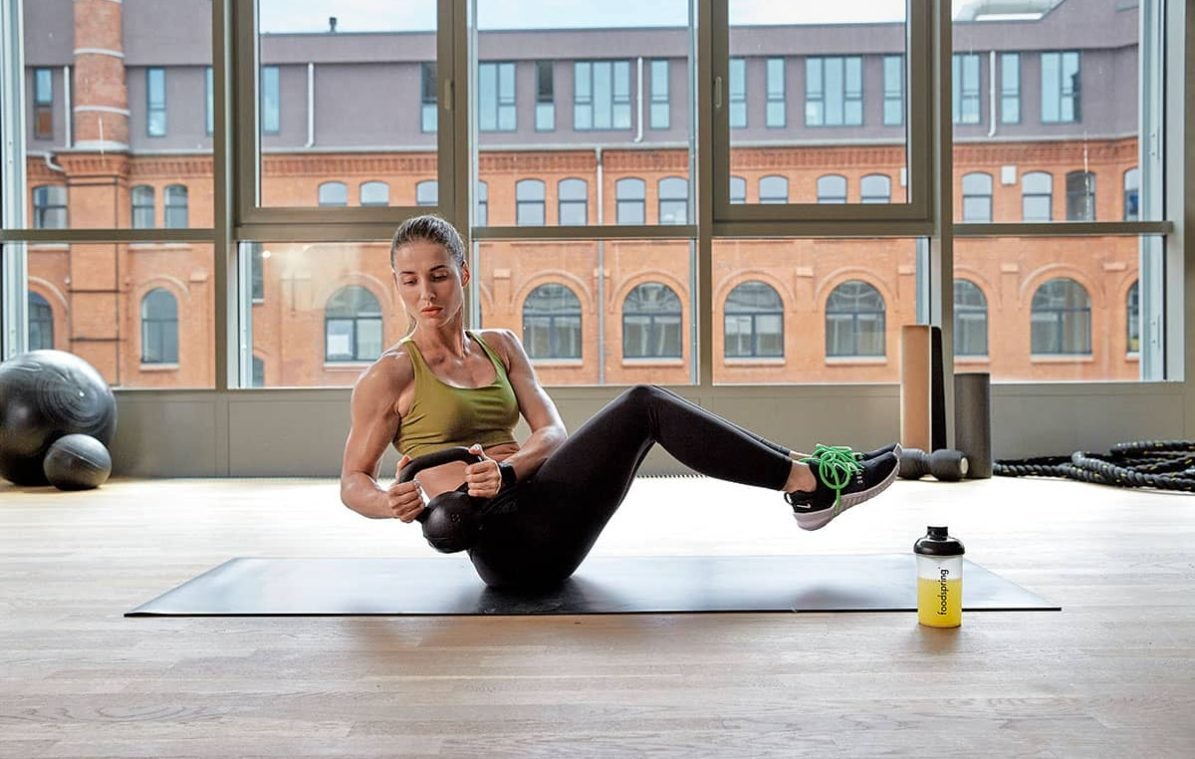How a Strong Core Will Improve Your Athletic Performance
 © foodspring
© foodspring
If you were to ask people exercising in your gym if their goals included building a strong core, it’s likely that very few of them would say no. Although their reasons for this may differ, avoiding back pain, boosting core stability in everyday life, or building those classic, visible abs are probably the most common motivators for doing planks and the like. However, current research findings indicate that targeted core training can also significantly improve an athlete’s performance.
Strength training for athletes is tailored to their respective disciplines and uses specific exercises to help them to improve their competitive performance. Competitive sports almost always involve exerting force on an external object (such as a ball or bat) through the arms or legs, so the training plan focuses primarily on the limbs that are most involved. So, the training plan for a soccer player will focus more on the lower body, while shoulders and arms will play a more important role for a tennis player. But core training – which simply means training the muscles in your pelvis, lower back, hips, and abdomen – is still an essential part of any training plan. Core training can boost both strength and stability, so it will improve performance in a wide variety of sports – from ball sports like soccer, handball, and basketball to other sports like swimming, dancing, karate, and golf.
This was the finding of a recent systematic review published in Frontiers Physiology. It compared 119 studies from scientific databases such as PubMed and Scopus, and 16 studies with a total of 419 participants met the inclusion criteria set by the PRISMA guidelines. Anatomically, the torso has numerous muscles, including the front, internal, external, and oblique abdominal muscles, as well as the back extensor, pelvic floor, and pelvic girdle muscles. A strong core will stabilize your spine and hips and provide the foundation for effective upper and lower limb coordination, which is especially important for your performance.
This is because your muscles always work together, never in isolation – both in everyday life and in sport, like playing in a soccer match. Power is transmitted via what are referred to as muscle chains, with your core acting as the hub. That may sound abstract, so think of it in terms of a metaphor: a car can have the best tires, the smoothest transmission, and the most modern body, but it is only as good as its power center – the engine.
If your body can transmit power efficiently through a strong core, your muscles interact smoothly, and your movement sequences are efficient and economical, that will deliver benefits – not only competitively, but also in recreational sports and in everyday life. If basic exercises like squats and deadlifts are part of your training plan (and they should be), then you are already working your entire body, including your core. However, our core training plan helps you to effectively supplement your workout with varied and intense core exercises and focus on strengthening your core. As you can see, core training is about far more than simply wanting to build a six-pack – it doesn’t just mean suffering through hundreds of sit ups and crunches. However, if you want a well-defined body, then it’s essential that you get your nutrition right, not just your training.
More interesting articles from foodspring:
Sources for this article
We at foodspring use only high-quality sources, including peer-reviewed studies, to support the facts within our articles. Read our editorial policy to learn more about how we fact-check and keep our content accurate, reliable, and trustworthy.

































